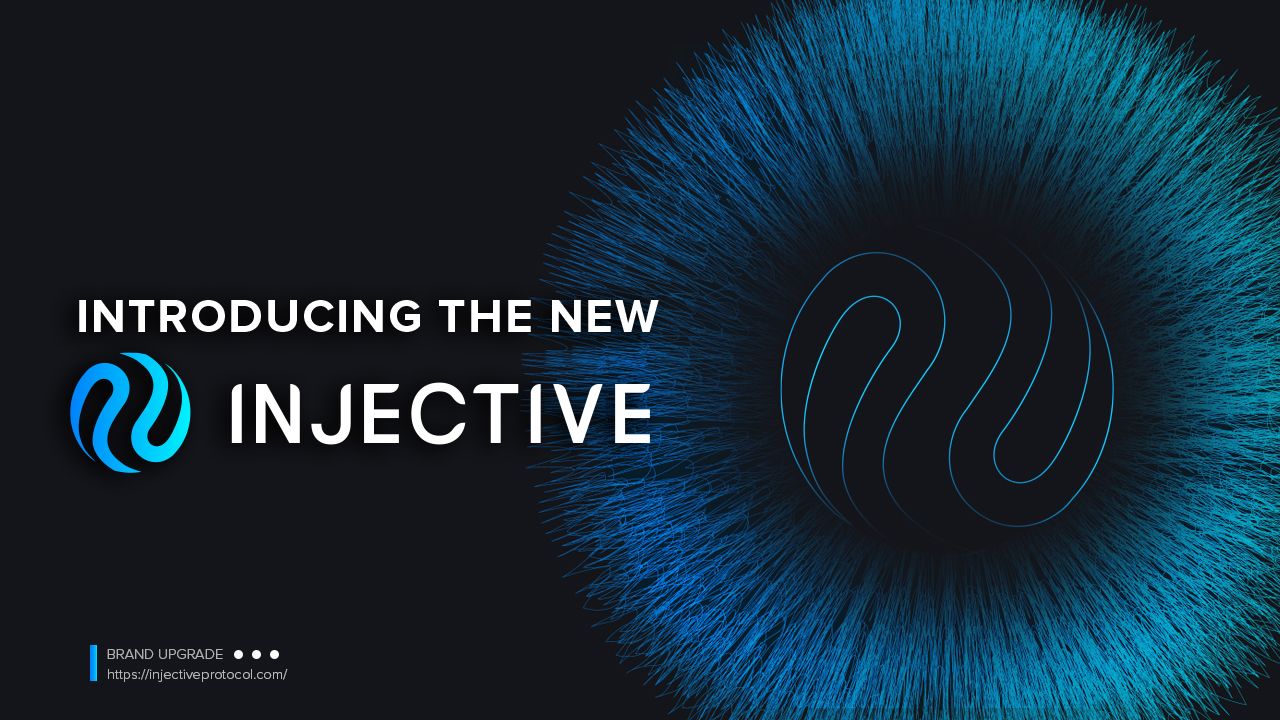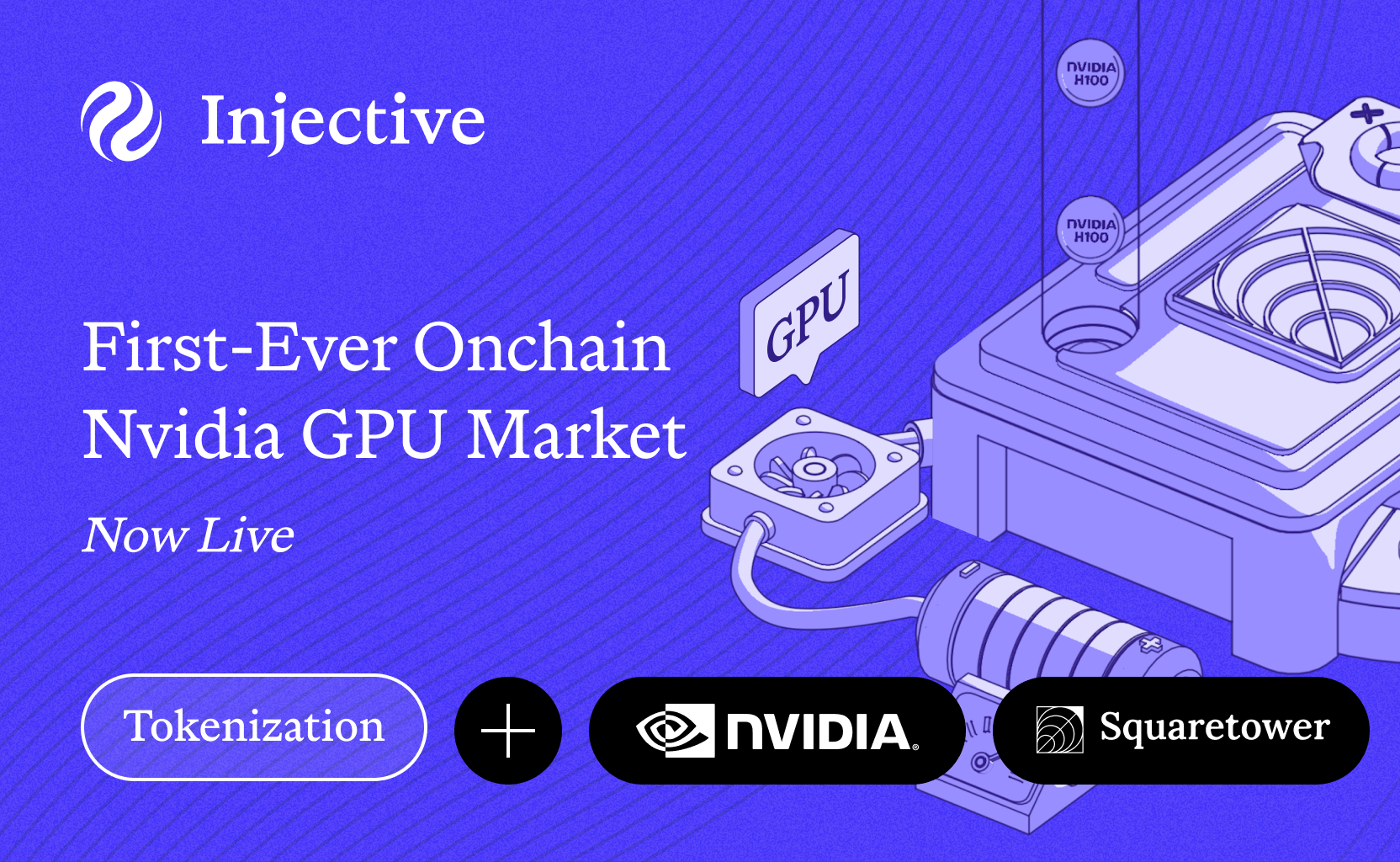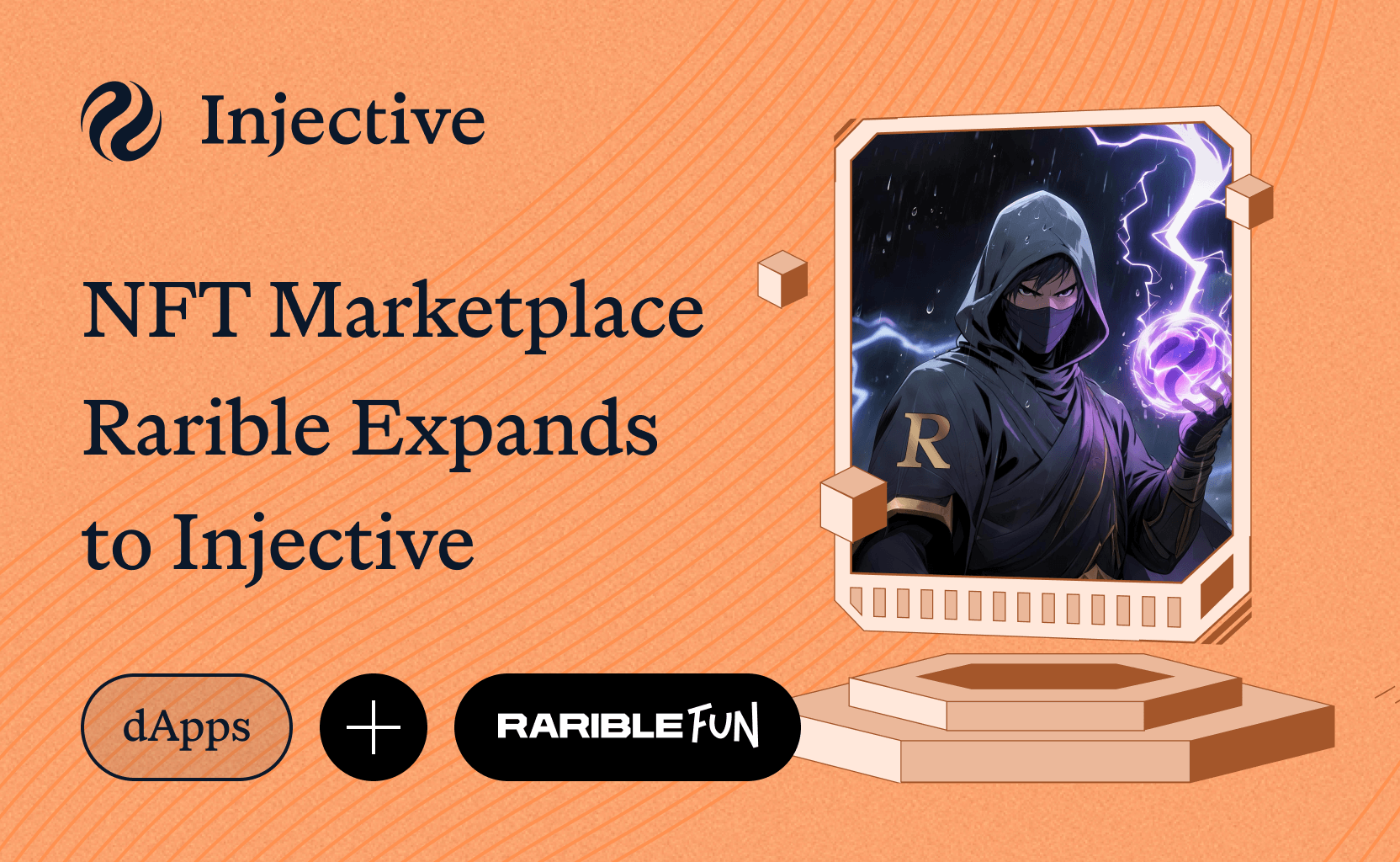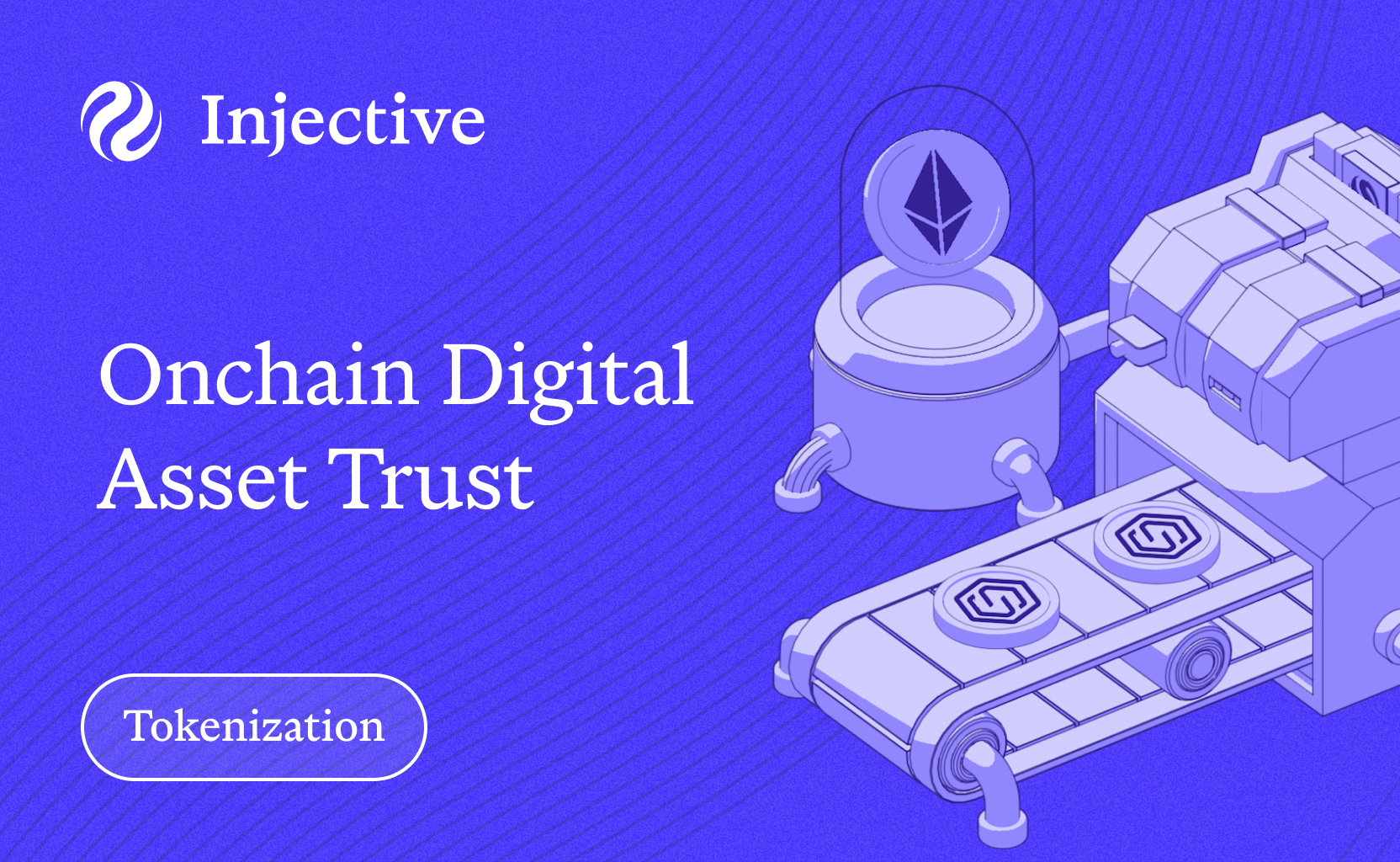It is a thrill to announce the Injective Protocol rebrand which marks a significant evolution in Injective’s mission, product, and brand. In connection with the rebrand, the visual identity and core message have been entirely revamped in order to better portray the community-driven vision for the future of decentralized finance (DeFi).
Two community-driven goals currently underpin Injective Protocol. The first is enabling anyone to access, create, and trade unlimited DeFi markets. The second is to allow developers to create cross-chain Ethereum-compatible DApps using a protocol that is custom built for decentralized finance. The unity between these two goals will pave the way forward as Injective pioneers the DeFi economy of the future.
As the Injective ecosystem continues to expand, the INJ token will play an increasingly crucial role within the network as it helps to govern and secure new cross-chain DeFi projects and applications built on Injective.
The Injective rebrand represents a culmination of tremendous progress while also beginning a new age of interoperability for the entire global crypto community.
The Beginning of Injective Protocol
Since its inception, Injective has been driven by a communal mission to create a more free and inclusive financial system through decentralization. As one of the supporters of this mission, Injective collaborators embarked on a journey into DeFi years before DeFi projects began to take the world by storm.
Crypto was designed to be governed by the people. Unfortunately, in the early years of crypto, centralized crypto exchanges often acted as gatekeepers to this new world. Faced with this reality, the community sought to build a next-generation decentralized exchange protocol that would adequately serve the needs of both retail and sophisticated traders.
Ethereum has been the go-to blockchain for new decentralized applications (DApps); it was the most battle-tested blockchain and enjoyed the highest levels of developer and user activity. However, it quickly became known that in order to build a decentralized exchange protocol capable of supporting complex products such as decentralized derivatives, the protocol would need a new scaling solution altogether.
Injective collaborators also came to the conclusion that other blockchains would gain traction in crypto markets alongside Ethereum. Since the genesis of the Injective Protocol, a number of new promising blockchains such as Polkadot and Solana have been introduced to serve user needs. Unfortunately, these ancillary blockchains lagged behind Ethereum with respect to their level of adoption.
Thus, the initial goal for Injective was refined: to build a decentralized cross-chain protocol that would allow for derivatives trading, while also being Ethereum-compatible. By doing so, Injective would be able to serve native Ethereum users while also working across new blockchains. The cross-chain part is critical: over these past few years, we’ve seen a number of blockchains being built, but most were not Ethereum-compatible. In other words, all of these new chains would likely be siloed and lack interoperability with Ethereum, leaving out millions of users who were already using the most popular blockchain.
The Evolution of Injective
While contributing to the creation of a cross-chain derivatives protocol, Injective collaborators achieved a number of technical milestones that would come to redefine interoperability and finance altogether.
Peggy Bridge: Injective Labs contributed the first bidirectional bridge between Ethereum and the Injective Chain. Unlike other token bridge setups, the Injective Peggy bridge is a decentralized, non-custodial bridge operated solely by the validators on the Injective protocol. Ethereum users can seamlessly bridge over any asset to access an environment without gas fees or miner extractable value (MEV).
Cosmos-based PoS: Consensus within the Injective protocol is achieved with instant finality. Typical gas economics do not prioritize block producers for processing and execution, thus eliminating any form of “gas war”.
Front-running Resistant: Front-running on the Injective protocol is impossible. There is no MEV on the network due to time-agnostic transaction ordering and a custom matching model.
IBC Compatibility: Cross-chain transactions across sovereign blockchains are made possible by the interoperable backbone behind Injective.
Decentralized Governance: All new market listings and protocol level changes are governed through a decentralized autonomous organization (DAO) which enables the network to be entirely community led.
Over the years the Injective protocol has grown to become both a state of the art derivatives exchange ecosystem and a DeFi application specific layer-one protocol. The synergy between these two realms helps pave the way into the future of Injective.
Injective is Pioneering the DeFi Hub of the New Internet Economy
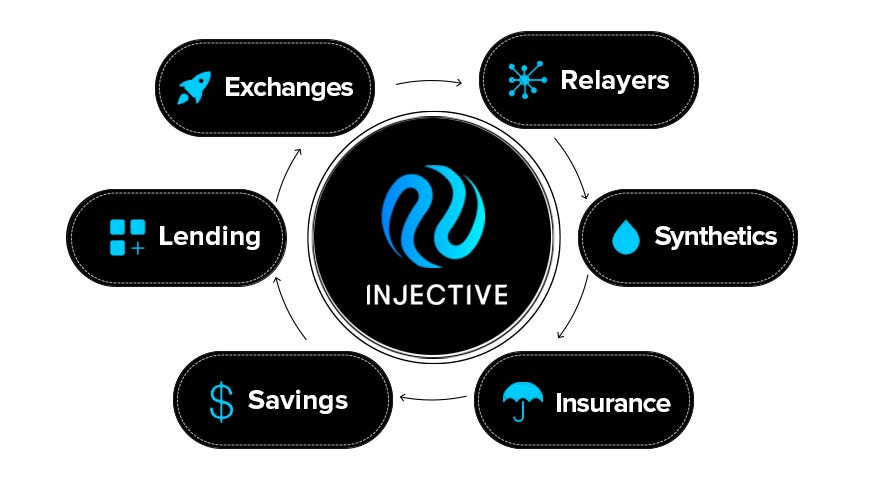
Injective was made to be Ethereum-compatible and cross-chain, which would help bring together users across distinct blockchain networks into one united crypto community.
New innovations built on Injective can be accessed through a broader ecosystem that is powered by cross-chain interoperability. As the capabilities of the protocol and DApps continue to grow, so will the strength of the Injective DeFi hub.
Nearly all other layer-one protocols are created as a standalone blockchain that hopes to attract developers. This creates a scenario where the layer-one protocol tries to be a one-size-fits-all solution for all DApps and ends up being subpar since it cannot properly cater to the specifics of each application.
Injective has flipped this traditional model by creating the first custom protocol for cross-chain DeFi applications. Ultimately, what makes Injective unique is that the Injective Chain was built to specifically support a truly revolutionary DeFi application: a fully decentralized derivatives exchange. While others begin with a layer one, hoping to have DApps on top, the Injective chain was created with the specific requirements of supporting a highly sophisticated derivatives exchange in mind.
Over the years, Injective minds took the time to understand and experiment across multiple chains and scaling solutions. From this perspective, building a future-proof derivatives protocol necessitates the creation of custom-logic modules catering to DeFi, such as an order matching model that would eliminate. Now, it is important to start sharing this pioneering technology with the world.
As an application-specific chain for DeFi, the Injective protocol is able to serve the needs of developers everywhere. Ethereum-compatibility allows developers to utilize familiar tooling to build novel applications while the interoperable backend allows DeFi apps built on Injective to seamlessly work across distinct blockchains such as Cosmos.
To spur development, there are a number of incentive mechanisms embedded into the protocol layer. For example, hosts of relayer nodes and UIs can earn up to 40% of all trading fees on Injective; an incentive unheard of in the crypto industry.
A number of applications have emerged to help create a flexible and high-yield strategy. Similar applications can be expected to flourish on Injective, incentivizing developers and builders to create new products such as decentralized hedge funds or yield generating products that serve the greater community.
The DApps on Injective will each add to the positive feedback loop within the ecosystem. For example, a developer building a relayer can interact with multiple applications on the network, adding to the overall value that UI is able to provide to the end user. In other words, each new DeFi application on Injective strengthens all others within the overall network.
The decentralized derivatives exchange on Injective will also be bolstered by new cross-chain projects and DApps. For example, insurance applications deployed on Injective can be used to underwrite risk in derivatives contracts. With the Injective network, opportunities are endless as users can innovate and experiment by leveraging the tools native to the protocol.
Build Cross-Chain Applications with Zero Limits
Injective empowers developers to launch DeFi applications from new relayers to new exchanges. Full EVM compatibility will be released later this year, allowing Injective to thrive between the crossroads of Ethereum compatibility and cross-chain interoperability. This means that any DeFi application already live on Ethereum can integrate easily with the advanced infrastructure layer of Injective to scale while benefiting from a powerful cross-chain mechanism.
Injective also houses the world’s first decentralized orderbook infrastructure, enabling new financial instruments that previously could not be created within a decentralized network. Now, users can deploy new cross-chain DeFi apps on Injective that would previously not have been possible on the native Ethereum layer such as orderbook-based exchanges.
Injective is able to dramatically accelerate DeFi adoption by enabling any application to be both Ethereum-compatible and interoperable across chains.
Internally, Injective contributors are working together on native cross-chain bridges to promising layer-one networks. So not only would DApps be composable with IBC compatible chains but they can also expect to utilize new bridges such as the Peggy bridge contributed by Injective Labs.
Using Injective’s self-evolving protocol, developers can also swiftly modify any parameter to suit their specific use case. Thus, Injective is made future-proof for upgrades that may occur later on down the line in the industry.
The New Injective Brand
An entirely new visual brand identity has also now been unveiled. As a communal effort, this will be incorporated throughout the Injective Protocol website, products and messaging in order to properly illustrate the expansion of Injective’s mission and the breadth of its ecosystem.
The Injective Protocol website has been significantly changed to provide a vibrant visual aesthetic for users. In addition, the community will find a significant amount of new resources that describe the protocol in more detail than ever before. There are also new portals that can help community members join Injective’s ecosystem or read popular media coverage about Injective. Developers will now find much more comprehensive information that guides them through building on Injective while also showcasing the unparalleled benefits of the protocol.
The Injective logo has been refined in order to showcase the harmonious duality of Ethereum-compatibility and cross-chain composability. Injective community members will also notice that certain elements of the logo resemble the previous Injective logo which was done to show that this rebrand is simply an evolution of Injective into its greatest chapter yet.
Elements such as typefaces and colors have all been standardized as well to provide consistent branding for the protocol. Over the coming months, the community looks forward to exclusive products that utilize the new brand identity while also upgrading prior applications that have been released.
Explore the new Injective Protocol website here.
Active projects can express interest to build alongside Injective here.
What is Injective Labs?
Injective Labs is a research and development company focused on creating unmatched decentralized finance solutions that contributes to Injective Protocol. In addition to providing backend support for the protocol, Injective Labs hosts a relayer interface that on-ramps users to the Injective network.
By contrast, Injective Protocol is a decentralized network governed by its community. The distinction between the two entities is critical given that Injective Protocol is designed to be fully decentralized.
In order to further explain this distinction, the Injective Labs team has contributed to an entirely new website for Injective Labs which you can find here. All team members of Injective Labs will be displayed on this website.
Injective Labs is actively hiring and encouraging interested candidates to apply here!
Injective: The Future of Finance
The Injective rebrand signals the beginning of a new era for cross-chain DeFi applications and decentralized derivatives trading.
Two community-driven goals currently underpin Injective Protocol. The first is in enabling anyone to access, create, and trade unlimited decentralized finance markets. The second is to allow developers to build cross-chain Ethereum-compatible DApps using a protocol that is custom-built for DeFi.
In just the past year alone, Injective received backing from stellar investors such as Binance, Pantera Capital, and Mark Cuban. Injective was covered by prominent publications that include TechCrunch, CBS and Forbes. The protocol processed billions of dollars in volume on the testnet. The progress by all measures has been outstanding and this will only accelerate from here to prepare for mass adoption.
The magnificent Injective community is to thank for its continued support in growing the ecosystem for both decentralized derivatives trading and cross-chain DeFi. All are encouraged to join the rapidly growing Injective community as it creates the DeFi hub of the new internet economy.

About Injective
Injective is a lightning fast interoperable layer one blockchain optimized for building the premier Web3 finance applications. Injective provides developers with powerful plug-and-play modules for creating unmatched dApps. INJ is the native asset that powers Injective and its rapidly growing ecosystem. Injective is incubated by Binance and is backed by prominent investors such as Jump Crypto, Pantera and Mark Cuban.
Website | Telegram | Discord | Blog | Twitter | Youtube | Facebook | LinkedIn | Reddit | Instagram | Orbit Newsletter
